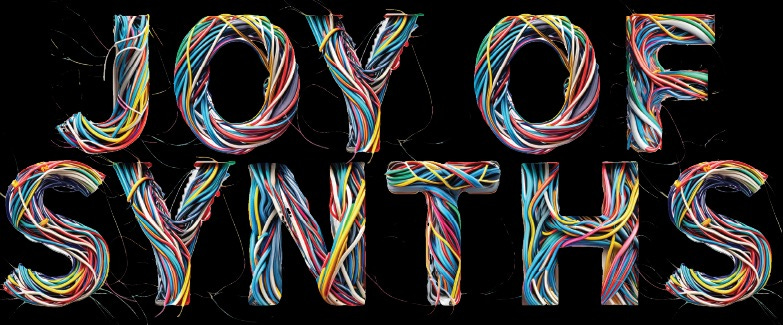Joy of Synths 31: Harmonics
Harmonics evenly and oddly covered in this non-musician’s guide to creating sounds for podcasts, videos, and sampling for music using analog synthesizers.
PLAY THROUGH HOLIDAY BLUES
12/3/2024 The Holidays for some are a time of deep depression or mania. Playing a synthesizer is not a cure but a lack of play may be an indicator of an imbalance.
Different people handle mental health issues differently. Medication, exercise, low-sugar diet, and sleep may help, but unfortunately, sleep is the first thing to go and a lack of sleep is a cause/symptom of mental and other health issues.
A synth is a great sleep machine. Set up a controller with a sequencer or arpeggiator and let it play the synth until you pass out. Or use your own recordings by creating soundscapes and drones if those make you drowsy.
Promise yourself to seek professional help if you feel a crisis coming on or are in crisis through the Holidays and 2025. Counselors may help reframe things and psychiatrists and doctors may prescribe medications. Unfortunately meds are a trial and error process of finding what works for each individual. Still, you are worth prioritizing and taking care of, even if it means taking a pass at any stressful obligations.
HARMONICS
Harmonics are a term used that can be difficult to explain. Given this challenge, I turned to smarter Scientific American resources to process an understanding about Harmonics. These paragraphs are simple sentences that build towards defining Harmonics.
Oscillators & Frequency
An Oscillator generates waveshapes that cycle at different rates based on the position of the dial. How frequently the waveshape cycles is its frequency which is measured in Hertz (Hz).
Humans are said to hear between 20Hz and 20,000 Hz, or 20 kHz (kilo = a thousand). So you have beating frequencies, unpatched sound, and pitched sound.
Assuming you are working an oscillator with no filter, the initial pitch of the oscillator may have Harmonics, aka overtones, depending on the Waveshapes.
A sine wave is a pure tone so that doesn’t have overtones. A sawtooth waveshape has all overtones. What does this mean?
The pitched sound has its initial frequency, for example, 220 Hz. You can multiply this fundamental frequency, or fundamental, by odd and even numbers. For 220 Hz, this would be 440 Hz for second order overtones (220x2), 660 Hz for third order (220x3), 880 for fourth order (220x4), and 1010 for 5th order, (220x5), etc.
It’s important to know that different Waveshapes have their own multiples of either odd, even, or all. These multiples will be at different strengths depending on the waveshape.
It may help to picture overtones as strands of a cable. A sine wave is a single strand of its fundamental frequency. A sawtooth wave is the thickest as it has odd and even overtones (which again, is the lowest frequency multiplied by odd and even numbers like 2, 3, and 4, etc.)
FILTERS AND FREQUENCIES
This comes into play with a filter. For example, a low pass filter will allow lower frequencies to the left of the dial’s position to pass through. It attenuates higher frequencies to the right of the dial with some roll off in decibels.
A filter likely has a resonance dial that boosts the frequencies around where the filter cut off is positioned. Keep in mind it’s not a hard cut like a limiter. A filter has a roll off that lowers frequencies by volume. A two pole filter is -12dB and a 4 pole filter is -24dB attenuation.
The resonance boosts these frequencies near the filter cut off. In doing so, it changes the harmonic structure of the initial waveshape. So if the filter dial is set at 660 Hz, you may be losing a saw tooth’s 4th, 5th and higher overtones.
It’s up to your ear to determine if this is what you want. Cutting and boosting frequencies to create or remove overtones changes the sound, but maybe not enough for you to notice or get excited by. This is where you can cycle through waveshapes, or combine the sounds of multiple waveshapes in a mixer before bringing the sound to the filter audio input. Listen to the results.
HARMONIC MODULATION
A filter likely has a control voltage, or CV, input to modulate, or change, the frequency cut off dial. The physical dial won’t move. Beneath the hood, picture the value moving left to right based on the shape of the voltage controlling it. This type of filter is a voltage controlled filter, or VCF.
The amount of CV and the shape of the voltage and its frequency are factors in determining where to set the filter dial. If it’s too much voltage you may not hear the high state of the shape. For example, you may want to turn the filter dial to full left and rely on the voltage to open up the filter (turn it to the right). Otherwise you’re spiking into higher frequencies, which isn’t so much a problem if your Voltage Controlled Amplifier (VCA) has its own control and doesn’t share the same control voltage source.
PERSONAL TASTE
Again, all synth playing is to personal taste. Playing with the filter plays with the harmonics and overtones which serves to create new and familiar sounds. But mostly new, given the nature of analog electronics and their fluctuations.
THAT THEM THERE’S HARMONICS
This concludes the Joy of Synths summary of harmonics. Try not to bog yourself down with charts and graphs as Harmonics are perhaps difficult to visualize beyond strands of a cable. Just remember that a waveshape with few overtones may sound thin and possibly annoying and a waveshape with all overtones will sound thicker and possibly more pleasant. Don’t confuse the issue by comparing synths to other instrument’s overtones. A synth is a synth and operates its own way. But which waveshapes and filter positions are best is a matter of trying and listening (don’t confuse this with trial and error because errors lead to new sounds). You know, the fun part of playing synthesizers.
BUT WHAT ABOUT TIMBRE (tam-brrr)?
Forget about Timbre, or the quality of the sound. There’s no measurement for that. Timbre is what keeps wind instruments sounding unique from other reed instruments that may share the same number of overtones. They sound different. That’s called Timbre and pronounced Tam-brrr.
The timbre of each Waveshapes varies, so skip timbre talk and go to where all energies should go: playing the synth however you deem fit.
END NOTE
Thanks for reading this far! This may very well be the last Joy of Synths newsletter for 2024! Have a holiday, if possible make it happy.
‘Tis the season of gift giving and this December 1 I was able to score a Taiga Keyboard for $799 plus $53 tax. Alas, the product box was beat to heck due to it being shipped in the product box alone to Amazon, who placed it in a sturdy box to fulfill the order. This is likely why I got the 20% off coupon to apply to the $999 price drop.
It arrived a week ago and I’ve yet to unbox it. Instead, I’ve taken up laser engraving Eurorack Plates as the Taiga Keyboard (TK) has a 24 HP (horizontal pitch) wide expansion Eurorack rack. I started engraving 8 HP wide plates then expanded the Wolfman image to 24 HP.
I never noticed how HUGE the TK is in Pittsburgh Modular’s videos. This monster synth is near the width of my synth desk. It’s coming out of its box today, so hopefully it generates monster sounds.
Next issue of Joy of Synths releases December 31, 2024 or January 1, 2025. It’s shaping to be a long read journal about the Taiga Keyboard journey. Cheers!
All Content Copyright 2024 Anthony Torres, All Rights Reserved.






